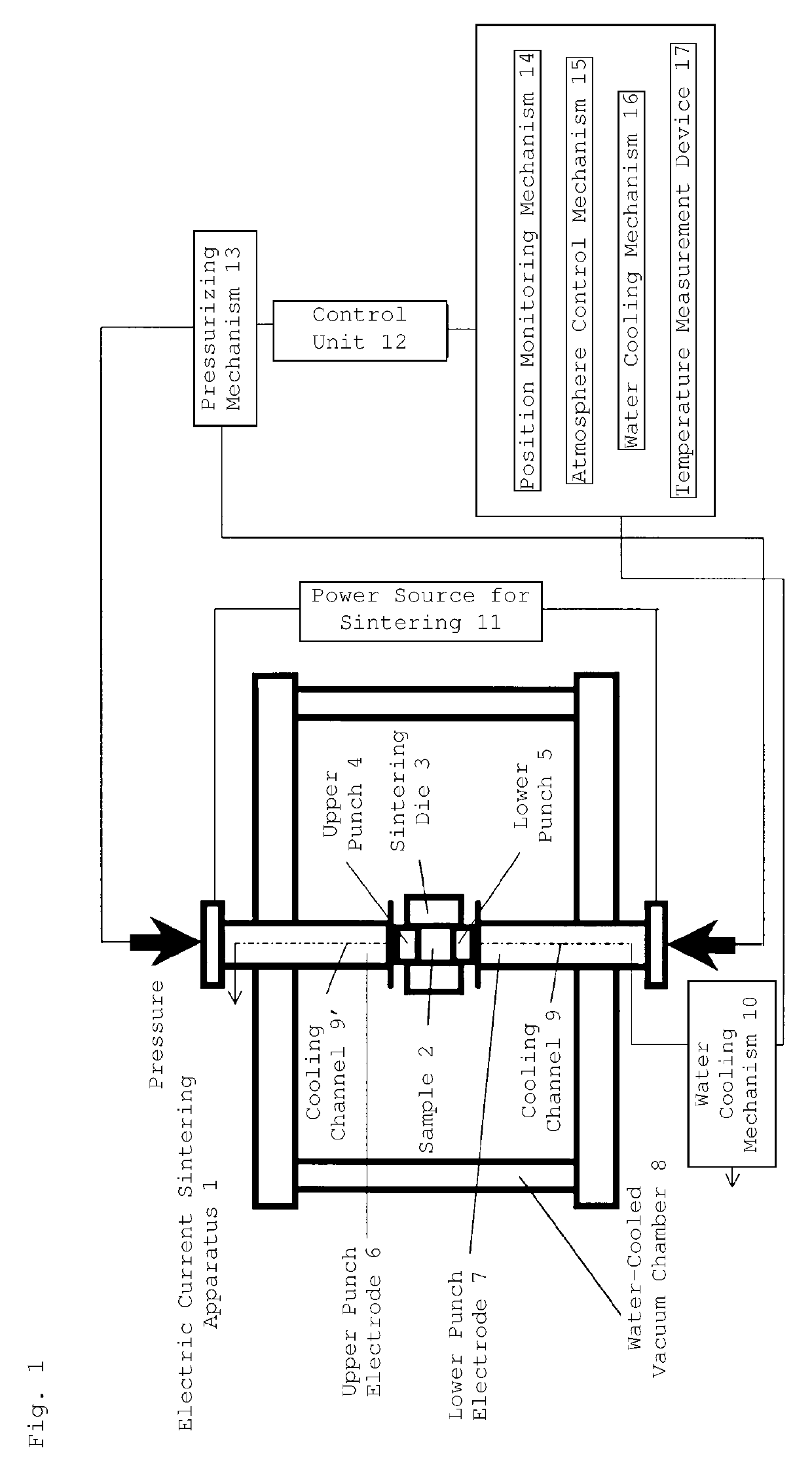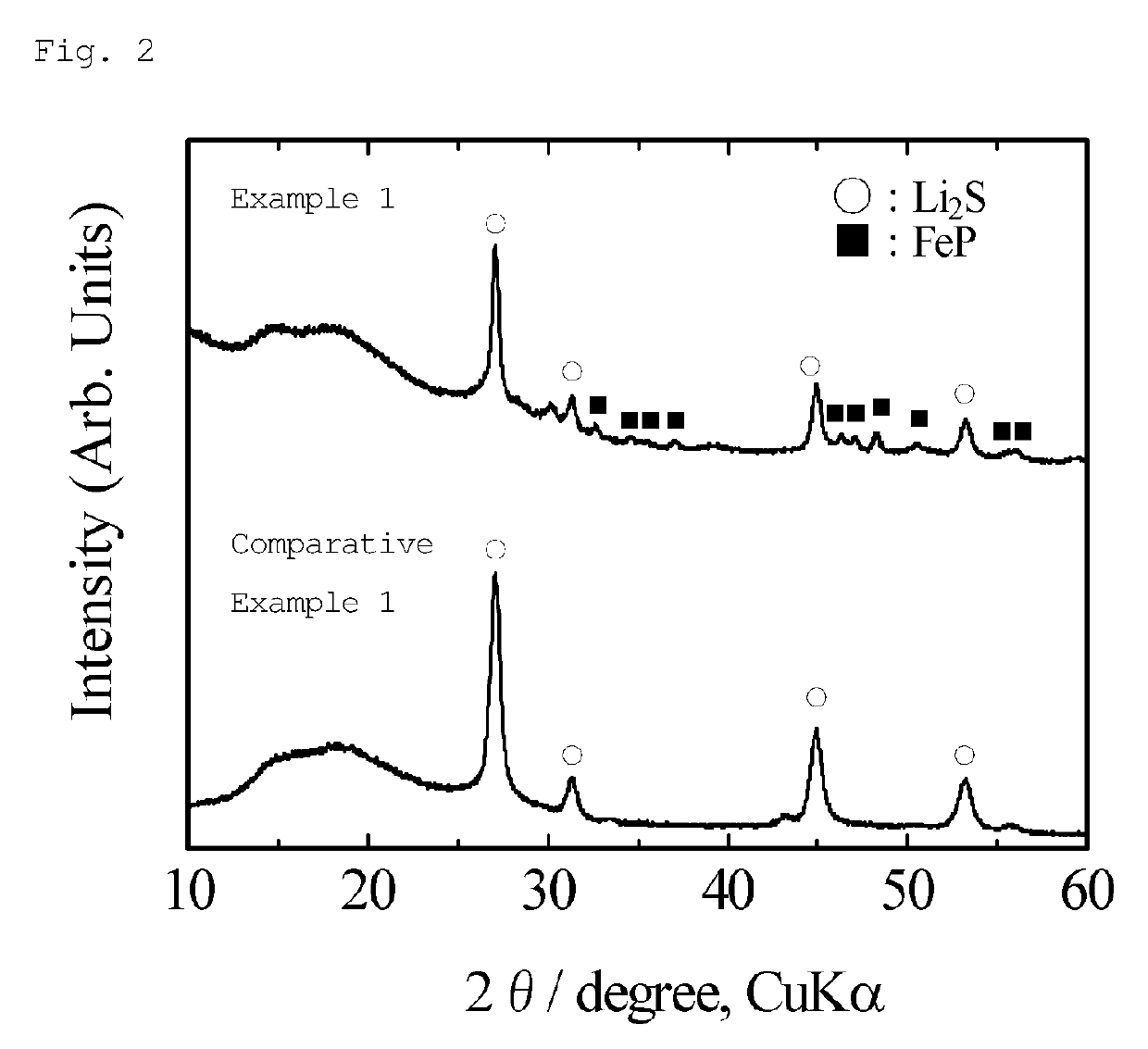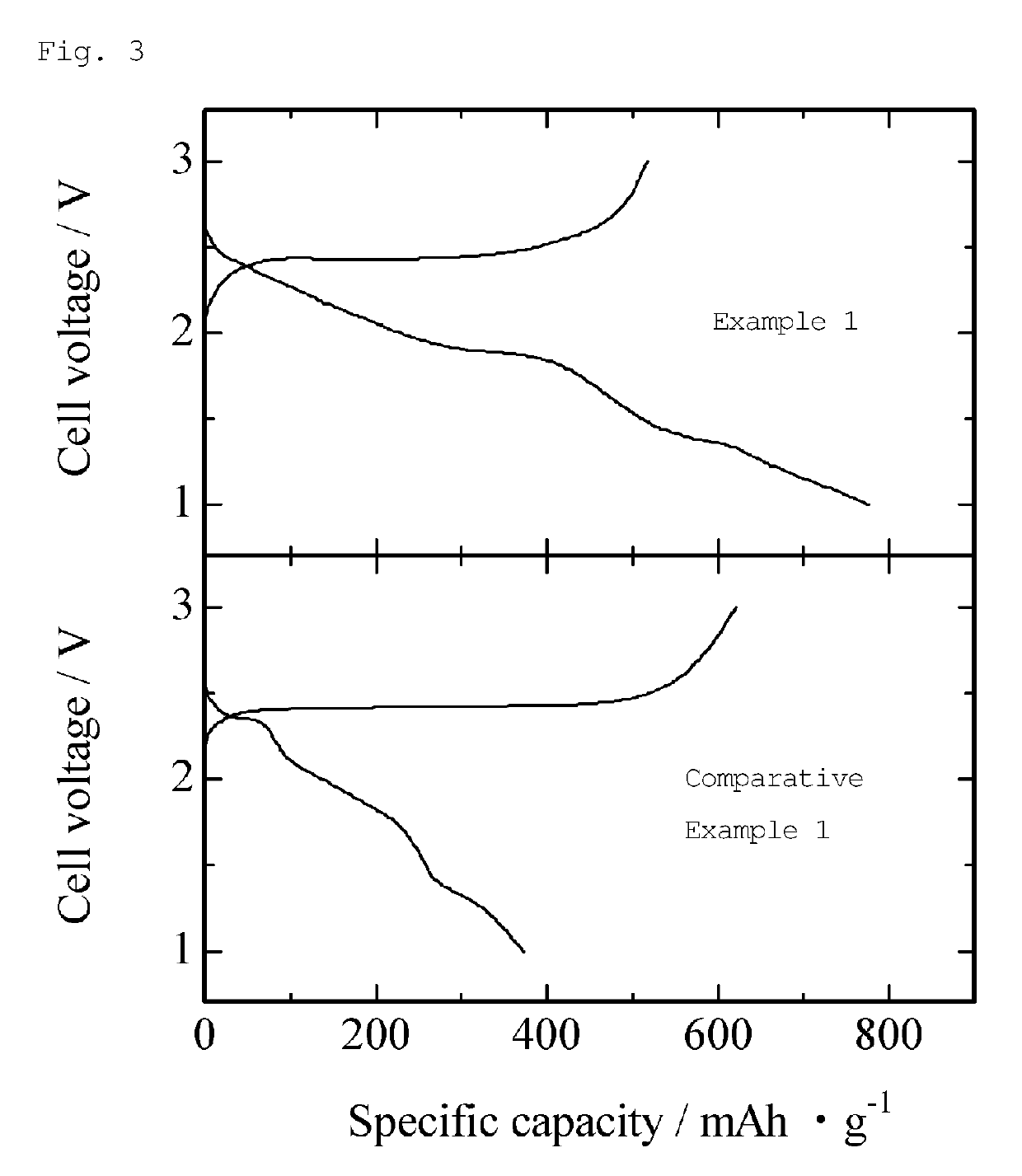Lithium-iron-phosphorus-sulfur-carbon composite and method for producing same
a technology of lithium-iron phosphorus and carbon composite, which is applied in the direction of cell components, final product manufacturing, sustainable manufacturing/processing, etc., can solve the problems of increasing the chemical formula weight of the active material of the electrode, reducing the electrical conductivity of the electrode, and reducing the chemical formula weight of the active material. , to achieve the effect of high electrode utilization rate, high electrode utilization rate and high capacity
- Summary
- Abstract
- Description
- Claims
- Application Information
AI Technical Summary
Benefits of technology
Problems solved by technology
Method used
Image
Examples
example 1
[0099]Commercially available spongy iron (Fe) (Junsei Chemical Co., Ltd., mean particle size: about 30 μm), commercially available red phosphorus (P) (Kishida Chemical Co., Ltd., mean particle size: about 20 μm), and commercially available sulfur (S) (Wako Pure Chemical Industries, Ltd., mean particle size: about 20 μm) were mixed to give a molar ratio of 1:2:6, and then heated at 550° C., thereby preparing iron phosphorus trisulfide (FePS3). This FePS3 and commercially available lithium sulfide (Mitsuwa Chemicals Co., Ltd., Li2S, mean particle size: about 16 μm) were weighed to give a molar ratio of 1:4 in an argon gas atmosphere in a glove box (dew point: −80° C.), fully mixed in a mortar, and packed into a graphite die having an inner diameter of 15 mm.
[0100]Subsequently, the graphite die filled with the starting materials was placed in an electric current sintering apparatus. The graphite die and the current-carrying part, which contains electrode portions, were housed in a vacu...
example 2
[0110]The procedure of Example 1 was repeated, except that the molar ratio of FePS3 to lithium sulfide (Li2S) was 1:5 and the heating treatment was performed at 1200° C. with an electric current sintering apparatus, thereby preparing a lithium-iron-phosphorus-sulfur-carbon composite. The proportion (atomic %) of each element used for the starting materials (in the composite) was as follows: Li 42.0%, Fe 4.2%, P4.2%, S 33.6%, and C 16.0%.
[0111]FIG. 4 shows an X-ray diffraction pattern of the obtained sample. As shown in FIG. 4, the peaks assigned to Li2S were observed as the main phase, and the peaks of FeP were also observed as a trace amount of impurities. The proportion (mol %) of FeP estimated in Rietveld analysis was about 4.4% (i.e., the proportion of Li2S was 95.6 mol %). The crystallite size estimated from the half-width of the diffraction peak based on the (111) plane of Li2S was about 47 nm. As described, this method prepared a lithium-iron-phosphorus-sulfur-carbon composit...
example 3
[0117]Exactly the same procedure as in Example 2 was repeated, except that the molar ratio of FePS3 to lithium sulfide (Li2S) was 1:6, thereby preparing a lithium-iron-phosphorus-sulfur-carbon composite. The proportion (atomic %) of each element used for the starting materials (in the composite) was as follows: Li 44.0%, Fe 3.7%, P 3.7%, S 33.0%, and C 15.6%.
[0118]FIG. 6 shows an X-ray diffraction pattern of the obtained sample. As shown in FIG. 6, the peaks assigned to Li2S were observed as the main phase, and the peaks of FeP were also observed as a trace amount of impurities. The proportion (mol %) of FeP estimated in Rietveld analysis was about 0.1% (i.e., the proportion of Li2S was 99.9 mol %). The crystallite size estimated from the half-width of the diffraction peak based on the (111) plane of Li2S was about 41 nm. As described, this method prepared a lithium-iron-phosphorus-sulfur-carbon composite containing lithium sulfide as the main phase with a crystallite size of 50 nm ...
PUM
| Property | Measurement | Unit |
|---|---|---|
| crystallite size | aaaaa | aaaaa |
| crystallite size | aaaaa | aaaaa |
| crystallite size | aaaaa | aaaaa |
Abstract
Description
Claims
Application Information
 Login to View More
Login to View More - R&D
- Intellectual Property
- Life Sciences
- Materials
- Tech Scout
- Unparalleled Data Quality
- Higher Quality Content
- 60% Fewer Hallucinations
Browse by: Latest US Patents, China's latest patents, Technical Efficacy Thesaurus, Application Domain, Technology Topic, Popular Technical Reports.
© 2025 PatSnap. All rights reserved.Legal|Privacy policy|Modern Slavery Act Transparency Statement|Sitemap|About US| Contact US: help@patsnap.com



